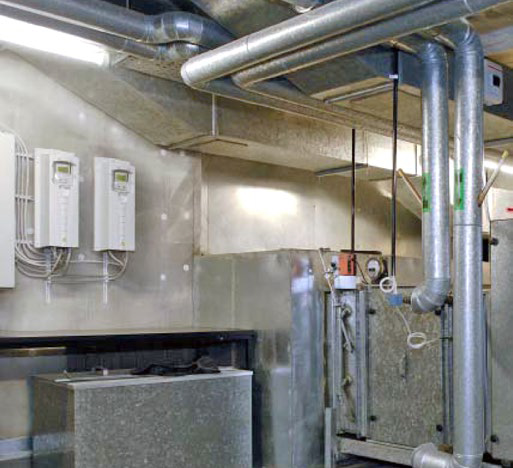The heating, ventilation and air conditioning (HVAC) system was designed to cope with the maximum capacity of 400 people. Lack of control meant that the HVAC system was running at over 4,500 hours a year at full speed, even though most days saw only 30 people using the gym at one time. Furthermore, the ventilation within the changing rooms was operating continuously, whether or not there was excess moisture.
Energy audit – basis for the improvement plan
Helsinki PWD launched a pilot project and asked a specialist HVAC company and distributor of ABB drives, Airwecare Oy, to investigate energy use at the school and to come up with a solution to improve both efficiency and the school environment.
Airwecare carried out an energy audit and found that the annual electricity consumption for the gym ventilation fans alone was 34,200 kWh, 20% of the total electricity consumption for the school. Also, 117 MWh of heating energy was released to the outside air through the ventilation system every year, equivalent to 26% of the entire school’s heating energy consumption. These high energy consumption figures were due to using the fans at full or constant speed.
Other problems identified included a poor fan efficiency of 20% and the fact that the return fan was blowing into the noise reduction chamber, disturbing the free flow of air.
Substantial savings, improved ventilation
The Airwecare solution uses ABB standard drives for HVAC, controlling new high efficiency Eff1 ABB motors, which in turn drive the supply and return fans. The supply fan responds to the CO2 reading in the gym hall and to the moisture levels from the shower. The return fan follows the speed of the supply fan, causing a small negative pressure in the building and giving a free flow of air through it. Running hours are set using the real time clock feature of the ABB standard drive for HVAC.
The air duct of the return fan was also fixed to cure the troublesome air turbulence, which was reducing the air flow. This also improved the performance of the other return fans. In addition, the fans are driven directly by the motor, with the result that the noise levels are significantly reduced compared to traditional belt-driven fans.
